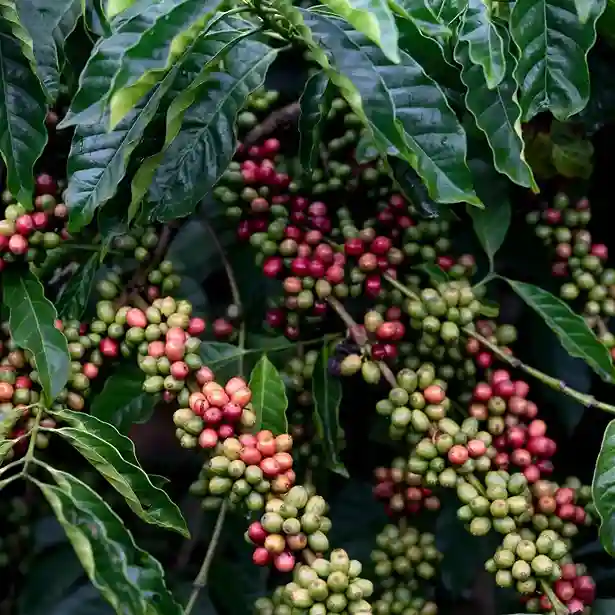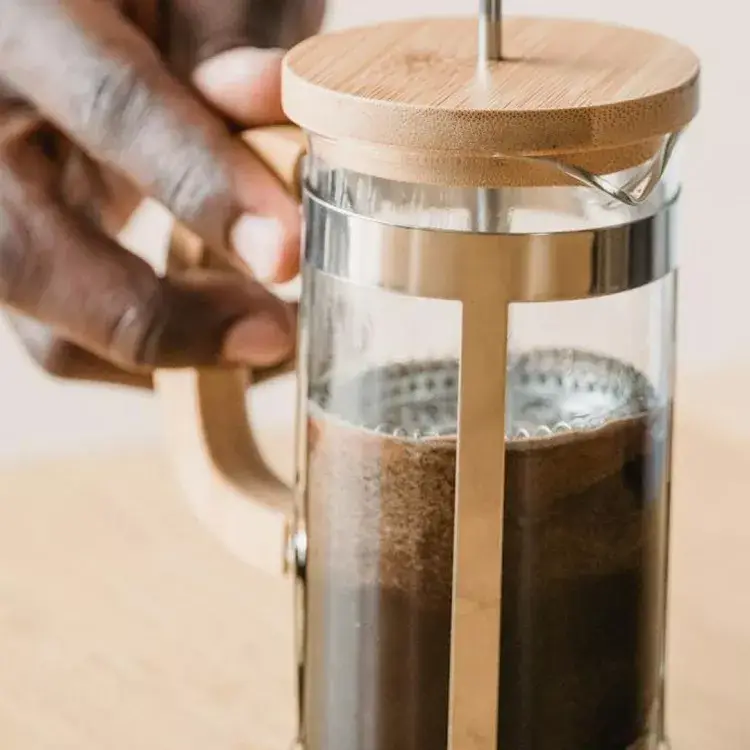A phenomenon in the world of coffee
Among the variety of coffee varieties and types that captivate with their taste and aroma, pibber is a rare phenomenon that attracts both ordinary coffee lovers and industry professionals. Its uniqueness lies in its structure, origin, flavor profile and processing method. All this ensures a unique bouquet and high quality of the drink.
Anatomical characteristics
In a normal coffee berry, two beans ripen, which are characteristically flat on one side and convex on the other. But sometimes, for some reason, only one bean develops, which is how we get pibber beans, which are rounded and resemble peanuts. The unusual anatomy also affects the physical properties of the seed. It is denser, less symmetrical, and contains all the same components as a regular grain, often in higher concentrations.
Causes of pibber grains formation
This interesting phenomenon occurs due to natural abnormalities in the development of the coffee berry, such as pollination disorders or genetic factors. Among the factors that can affect this are climate, altitude, soil type, and even wind during the flowering period. As a result, one of the two grains does not develop, and, as a result, the other takes up all the free space. This is how pibber is formed – a single, but full-fledged grain. Some varieties have a natural tendency to form such fruits, and yet this phenomenon remains the exception rather than the rule.
Unique flavor characteristics of a rare fruit
Due to their rounded shape, the unique beans are roasted differently: the heat is distributed more evenly, which allows for better flavor development. Freshly brewed coffee made from these beans often has a richer, more concentrated flavor, with bright fruity or chocolate notes. Compared to regular Arabica, the flavor characteristics of pibber beans can be expressed in higher acidity, a more distinct body, and a long aftertaste. This profile is in particular due to the peculiarities of the distribution of aromatic oils within the grain.
Popular varieties of pibberries and geography of cultivation
The most famous varieties that produce such fruits come from Jamaica, Tanzania, Hawaii, Kenya, and Colombia. For example, Tanzanian Piberi from the Kilimanjaro region has bright citrus notes and a slight acidity, while Jamaican Blue Mountain Piberi is famous for its silky body and mild, layered flavor. Regardless of the region, growing these beans requires a special approach: strict quality control on the farm and careful sorting.
In addition, optimal climatic conditions, careful harvesting by hand, and long-term drying are important to preserve all the unique properties of the seeds.

Processing and roasting features
Due to their round shape, they require special attention at all stages of processing. They tend to have atypical drying dynamics during washing or drying, and react differently to heat during roasting. Roasters often use separate profiles specifically for this type of bean to avoid overheating or insufficient extraction. This helps to preserve the characteristic aroma, high sweetness and balance of flavor.
Brewing methods
To maximize the potential of the pibber bean, there are several things to consider. First, the grind should be slightly finer than for regular Arabica, as these round coffee beans have a denser structure. Secondly, the temperature is very important so as not to destroy the aromatic compounds: the ideal temperature is between 91 and 94 °C. Pourover, aeropress, or kemex methods are perfect, as they allow you to control the extraction. For espresso, fine-tuning of the mill is essential, as it is essential to achieve full flavor development.
Why the cost of round beans is higher than the cost of arabica
Despite their resemblance to the classic Coffea fruit, pibberries are much rarer. On average, they make up only 5-10% of the harvest, so they must be sorted by hand, which greatly complicates and slows down production. Add to this the complexity of roasting, separate packaging and marketing, and the price becomes 15-20% higher. But the main difference is not the cost, but the uniqueness. After all, this product is the result of a rare natural phenomenon that offers another dimension to the coffee experience.
How to distinguish authentic grains from fakes when buying
In order to avoid a fake, it is important to pay attention to the shape of the beans: real pibber is always rounded, without a characteristic flat side. Beans of the same shape should be in the majority: mixing with traditional beans may indicate poor product quality. It is also important to check the country of origin. Reputable farms come from Tanzania, Jamaica, and Hawaii, so these regional names usually indicate authenticity. You should only buy from trusted suppliers who provide information about the origin of the grain, the processing method, and the date of roasting.
Piberi is not just another type of coffee bean, but a separate story in the world of coffee. Their shape, rarity and unusual flavor profile open up new facets of a familiar drink. This is the choice for those who appreciate the details and seek to understand more about how rich and unexpected coffee can be.





